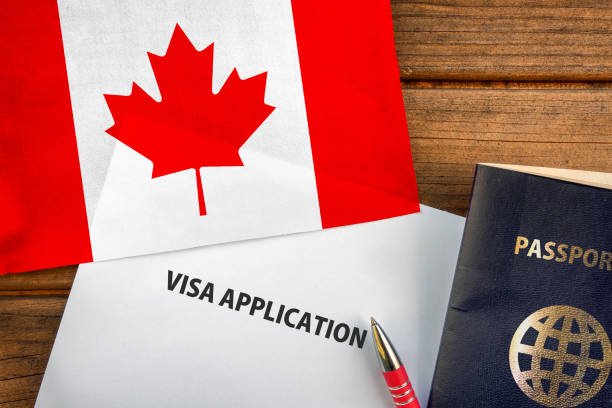Canada’s healthcare system is among the most respected in the world, but behind the scenes, there’s a growing demand for international nurses and healthcare professionals. If you’re qualified and passionate about healthcare, now is the best time to turn your skills into a life-changing opportunity in Canada. This post will walk you through every step to secure a job, apply for sponsorship, and legally immigrate as a healthcare worker in this decade.
Overview of the Healthcare Labor Shortage in Canada
Growing Demand Across Provinces
A significant shortage of healthcare workers has been observed across Canada in 2025. Aging populations, increased chronic illness rates, and healthcare system expansions have driven this demand. Provinces such as Ontario, British Columbia, and Alberta have reported critical gaps in nursing staff, especially in rural and northern regions.
Openings for International Professionals
To bridge these shortages, international healthcare professionals have been actively recruited. Immigration programs have been revised to accommodate more skilled healthcare workers, including registered nurses, personal support workers, and allied health staff.
Government Response and Funding
Substantial investments have been made by federal and provincial governments to improve healthcare infrastructure and human resources. Incentives and immigration pathways have been introduced to ease the entry of qualified foreign workers.
Types of Nursing & Health Jobs in Demand
Registered Nurses (RNs) and Licensed Practical Nurses (LPNs)
Registered Nurses have continued to be highly sought after across all healthcare facilities. Their responsibilities have included patient assessment, care coordination, and clinical documentation. Licensed Practical Nurses have supported RNs by delivering routine care and assisting in rehabilitation.
Personal Support Workers (PSWs) and Healthcare Aides
PSWs and aides have been in demand in long-term care homes, hospitals, and private residences. These roles have focused on assisting patients with daily activities such as bathing, feeding, and mobility.
Home Care and Long-Term Care Roles
The shift toward home-based and long-term care has created new opportunities for foreign healthcare workers. Agencies offering in-home services have actively sought PSWs and licensed caregivers from abroad.
Allied Health Professionals
Technologists, physiotherapists, occupational therapists, radiologists, and respiratory therapists have also been sought in high numbers. Many of these roles have been added to Provincial Nominee Programs and occupation-in-demand lists.
Eligibility Criteria for Foreign-Trained Nurses and Health Workers
Education and Professional Qualifications
International applicants must have completed a recognized nursing program equivalent to Canadian standards. Credentials have been required to match a two- or four-year nursing diploma or degree.
Work Experience Requirements
A minimum of one year’s post-qualification experience has typically been required. For senior nursing roles, additional years of relevant practice have been preferred.
Language Proficiency
English or French proficiency has been mandatory. Tests such as IELTS (Academic) or CELBAN have been accepted to prove language ability, with minimum scores defined by nursing regulatory bodies.
Credential Recognition and Licensing
Credential recognition has begun with the National Nursing Assessment Service (NNAS). Once NNAS assessment has been completed, further steps for licensing with provincial nursing regulators must have been taken.

Pathways to Work Legally in Canada
Express Entry: Federal Skilled Worker Program
This federal immigration system has been used to invite qualified nurses under the Federal Skilled Worker Program. Applicants have needed to meet eligibility based on age, education, work experience, and language skills.
Provincial Nominee Programs (PNPs)
Many provinces have added healthcare streams to their PNPs. Provinces such as Nova Scotia, Manitoba, and Saskatchewan have issued invitations specifically to nurses and caregivers with job offers or relevant experience.
Home Support Worker & Home Child Care Provider Pilots
Under these pilot programs, caregivers have been allowed to apply for permanent residency while working in Canada. Eligibility has included a valid job offer, CLB 5 in English, and one year of post-secondary education.
Temporary Foreign Worker Program (TFWP)
Nurses and healthcare aides have also entered through the TFWP when sponsored by an approved Canadian employer with a positive LMIA (Labour Market Impact Assessment).
International Mobility Program (IMP)
Some health jobs have qualified for LMIA exemptions under IMP, especially if the employer has a history of international recruitment or the applicant has received a job aligned with bilateral agreements.
How to Get Licensed as a Nurse in Canada
National Nursing Assessment Service (NNAS) Process
All foreign-trained nurses must have their credentials assessed by NNAS. This process has involved document submission (transcripts, proof of registration, identification), verification, and a comparison against Canadian education standards.
Provincial Licensing Authorities
Once NNAS assessment has been received, applicants have proceeded to apply to a regulatory body such as:
- College of Nurses of Ontario (CNO)
- British Columbia College of Nurses and Midwives (BCCNM)
- College of Registered Nurses of Alberta (CRNA)
Each regulator has set its own licensing exams, fees, and language requirements.
NCLEX-RN Exam
Passing the NCLEX-RN (National Council Licensure Examination) has been necessary for most RNs to obtain a license. This computer-based exam has assessed nursing judgment, patient safety, and healthcare best practices.
Bridging Programs
For those whose credentials have not been immediately accepted, bridging programs have been offered at accredited Canadian colleges. These programs have helped candidates meet educational and clinical practice requirements for licensure.
How to Find Nursing & Health Jobs with Sponsorship
Government Job Boards
- Job Bank Canada: The official government job portal has filtered listings with LMIA-approved employers.
- HealthForceOntario: A key portal for healthcare hiring in Ontario.
Private Healthcare Agencies
Numerous agencies have recruited foreign nurses for long-term care and private homes. Examples include Bayshore HealthCare, SE Health, and ParaMed.
Resume and Cover Letter Standards
Canadian employers have expected concise, professionally formatted resumes. Key tips have included:
- Using bullet points to highlight nursing duties
- Including license numbers or registration references
- Avoiding personal details like photos or marital status
Virtual Interviews and Assessments
Online interviews have often been required. Employers have tested clinical knowledge, language fluency, and scenario-based decision-making.
Visa Sponsorship Process Explained
Employer Role in Sponsorship
Canadian employers have played a key role in supporting visa applications. They have submitted job offers, supported LMIA applications, and provided letters of support for immigration.
LMIA and Job Offer Requirements
An LMIA has demonstrated that no Canadian citizen or permanent resident could fill the position. With a positive LMIA, foreign workers have been eligible for work permits.
Document Requirements
Applicants have submitted:
- Valid passport
- NNAS report or license application receipt
- Job offer letter
- Language test results
- Educational credentials
Processing Time and Fees
Processing has ranged from 8 to 16 weeks, depending on the visa stream and applicant’s country. Fees have included government charges for permits, medical exams, and credential evaluations.
Living and Working as a Nurse in Canada
Salary Ranges
Nursing salaries have varied by role and province. On average:
- RNs: CAD $65,000 – $95,000 per year
- LPNs: CAD $48,000 – $65,000 per year
- PSWs: CAD $32,000 – $45,000 per year
Remote and northern postings have offered additional bonuses and travel allowances.
Work Conditions and Culture
Workweeks have ranged from 36–40 hours. Night shifts and weekend rotations have been common. Respect for teamwork, adherence to protocols, and patient-centered care have defined Canada’s nursing culture.
Employee Benefits
Workers have gained access to:
- Provincial healthcare
- Dental and vision insurance (varies by employer)
- Paid vacation (2–4 weeks annually)
- Pension and retirement savings programs
Support for Newcomers
Orientation programs, workplace mentorship, and settlement services have been offered to help newcomers adjust. English language support and integration services have also been provided.
Top Provinces Actively Hiring Foreign Nurses in 2025
Ontario
Ontario has remained the top province for nursing hires. With multiple pathways and its HealthForceOntario recruitment initiative, Ontario has led efforts to bring in international nurses.
British Columbia
The province has simplified its licensing procedures and offered bridging programs tailored for foreign professionals.
Alberta
Alberta has expanded its PNP and increased healthcare funding. Attractive salaries and strong support for IENs have made it a top choice.
Nova Scotia
Nova Scotia’s Immigration Pathway for Healthcare Professionals has provided a fast-track for foreign nurses, particularly in rural areas.
Manitoba
Through its Rural and Northern Immigration Pilot, Manitoba has welcomed healthcare professionals willing to work outside of Winnipeg.
Challenges and How to Overcome Them
Delays in Credential Recognition
The NNAS and provincial licensing processes have taken several months. Starting early and seeking guidance from regulatory bodies has helped reduce delays.
Language and Communication Barriers
While clinical knowledge has been strong among international nurses, communication challenges have affected integration. Enrolling in English-for-nursing programs has enhanced confidence and performance.
Adjustment to Canadian Work Culture
Canadian healthcare has emphasized evidence-based care, electronic documentation, and patient autonomy. Training and shadowing have helped in adapting to these norms.
Limited Local Work Experience
Some employers have hesitated to hire newcomers without Canadian experience. Volunteering, internships, or part-time work during the licensing period have bridged this gap.
Expert Tips to Increase Your Chances of Getting Hired
Start Credential Assessment Early
The NNAS process has taken up to 12 months. Beginning this process before job hunting has been essential.
Target Employers with LMIA Experience
Companies familiar with foreign hiring have handled sponsorship efficiently. Job Bank and agency listings have identified such employers.
Enhance Skills Through Certifications
Courses like CPR, First Aid, and geriatric care certification have improved resumes.
Apply to Multiple Provinces
Licensing in one province has allowed easier migration later. Applying in multiple jurisdictions has increased chances of success.
Use Settlement Agencies and Job Fairs
Organizations like YMCA, COSTI, and local immigrant centers have offered job search and interview support. Attending healthcare-specific job fairs has built valuable connections.

Conclusion
Canada has remained a top destination for foreign nurses and healthcare professionals in 2025. The combination of labor shortages, inclusive immigration policies, and a welcoming healthcare culture has created ideal conditions for skilled workers abroad. With the right documents, licensing strategy, and employer connections, landing a nursing job in Canada with visa sponsorship has been more achievable than ever.
Applicants are encouraged to begin their credential assessments, brush up on communication skills, and explore the many healthcare pathways open across Canadian provinces.


















